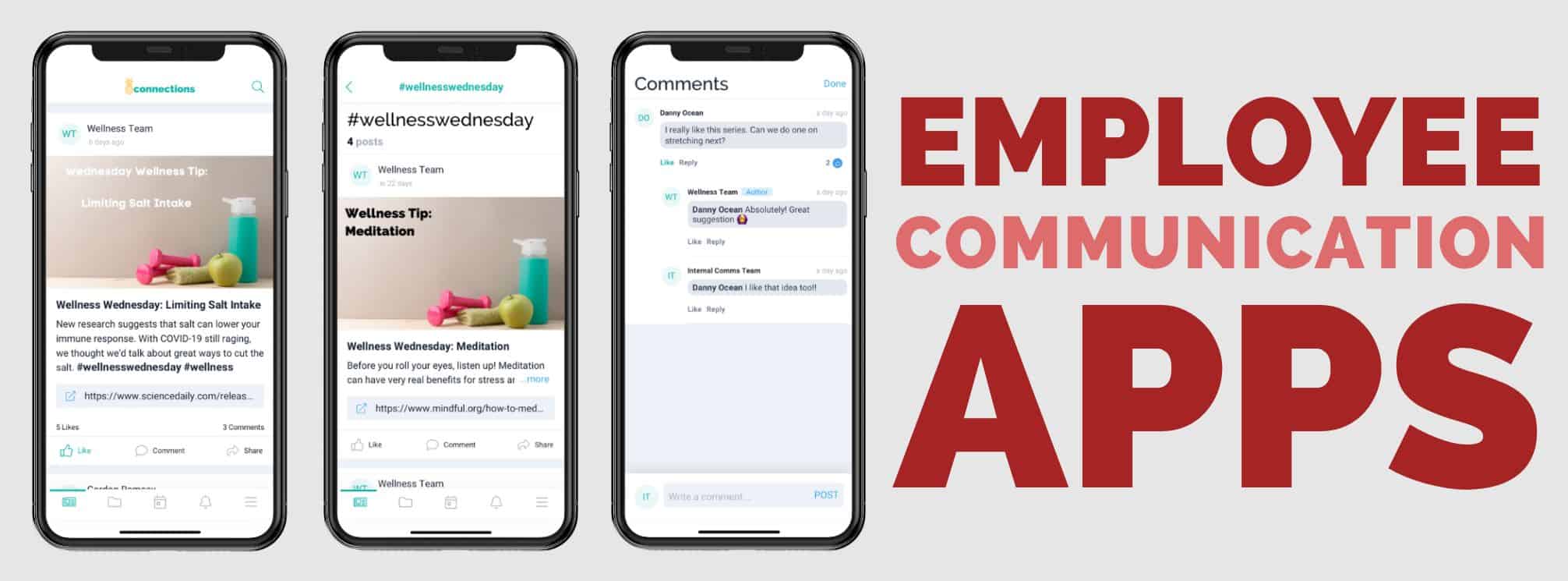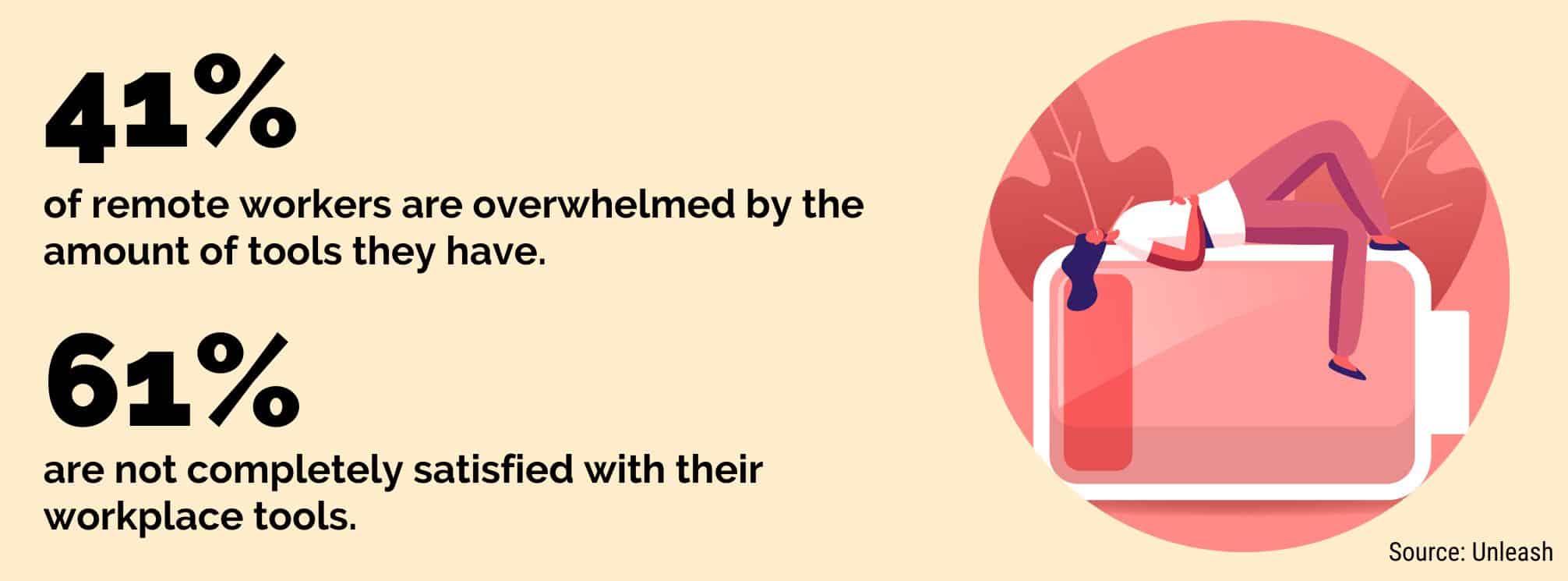Employee Communication Apps: How to Choose the Right Employee App
You already know that employee communication apps can streamline your team’s interactions and boost engagement. The real question is: Which one is the best fit for your business? With so many apps promising to transform internal communication, it’s easy to feel overwhelmed by the choices.
In this guide, we’ll walk you through the key factors to consider so you can confidently choose the app that meets your specific needs and keeps your workforce connected.
What Are Employee Communication Apps?
Employee communication apps are mobile applications that users can download onto a smartphone or tablet. These apps are password protected to provide the layer of security that companies need when sharing company information.
Employees can use these apps to search for important information, see updates in real time, access company calendars, and then interact with their peers, frontline managers, and senior leadership.
The rise of this type of digital comms platform occurred when companies realized they did not have sufficient ways to reach their mobile-first audiences: their deskless employees. The very nature of a deskless employee’s job is that they aren’t tied to a desk or using a computer for work. Non-desk workers often don’t have access to channels like email or a traditional intranet. Hence, the rise of the employee communication app.
Another big push for employee apps came in 2020 during the COVID-19 pandemic when more employees became remote workers and no longer had the same level of connectivity. Remote workers now work from anywhere and benefit from having a mobile-first and versatile channel for internal comms.
[optin-monster slug=”tb3dacv8pfgx64xeowzi” followrules=”true”]
Why Do You Need an Employee App For Communication?
The best employee communication apps serve as a single source of truth, or a hub, of information, resources, and people.
But why do you need a communication hub?
Unleash research has found that 41% of remote workers are overwhelmed by the amount of tools they have to use for work. And 61% are not completely satisfied with the tools they have to use.
The reality is, as companies have gone through digital transformation they have adopted all kinds of technology. But it is not always the right tech or thoughtfully rolled out and integrated into the work culture. This has led to employees—remote, deskbound, and deskless—having too many accounts on too many systems. All this technology that was supposed to make their jobs easier, have actually ended up creating more work. But an employee app can serve as a single tool that gives employees access to multiple systems without needing to log in again.
Our own research has shown that frontline managers have access to far more channels of communication than frontline workers who are not managers. Most deskless employees only have access to their direct manager, signage, and maybe shared workstations to receive employee updates. Employee comms apps are, therefore, a great direct channel to reach all employees.
How Do You Choose the Right Employee Communication App For Your Business?
Choosing an employee app that will be right for your business and employees comes down to a few key factors:
- The type of employees who make up your company. If you mostly have deskbound workers who come into an office, an employee app might not be right for you. But if you have a hybrid workforce or frontline workers, an app makes much more sense. Mobile-first solutions are best for reaching employees who are on the move.
- Your budget. Not all employee communications apps are priced the same. Many apps offer features and functionality a la carte, which can add up quickly. But apps like theEMPLOYEEapp are all inclusive with major features with the ability to add on profiles, special integrations, and additional tiers of users as you grow.
- The kinds of messages you are sending. Based on the kind of messages you are sending, you might want apps with certain features. Content targeting and being able to selectively choose which posts have likes/comments/social sharing enabled are important considerations.
- Your communication goals. What do you hope to achieve as an internal comms team? Choosing an app provider who supports those objectives is an important factor when making your decision.
- Your business objectives. In addition to your comms goals, you’ll want to consider where your business is headed and how you will be able to contribute to achieving those top priorities.
Based on your answers to these questions, you’ll want to pick an employee app provider who meets you where you are and can grow with your business.
[optin-monster slug=”k1j8dgacjxzsrc0uhh3w” followrules=”true”]
Key Features of Employee Apps For Internal Communication
Some employee app features and functionality are more important than others. But remember to choose the employee communication app that works best for your business. A few core features that employee apps have are:
- Targeted content delivery to employee groups
- Employee engagement functionalities (likes, comments, @ mentions, social sharing)
- News feed and document storage
- Push notifications for real-time updates
- Emergency alerts for critical communications
- Events calendar for improved scheduling and organization
- Company directory for easy access to employee contact information
- Multimedia file support for sharing rich content
- Analytics to measure communication effectiveness
Case Study: Successful Implementation of Employee Communication Apps
Real-world examples provide valuable insights into the successful implementation of employee communication apps. In this section, we’ll explore case studies highlighting organizations that effectively leverage employee apps to enhance internal communication, streamline operations, and engage their workforce.
- Ryman Hospitality Properties implemented theEMPLOYEEapp to connect with their deskless hospitality employees. Read their case study to learn more about their experience and the benefits they achieved through their mobile app implementation.
- Margaret Mary Health had outdated communication channels. So they turned to our mobile intranet, which would give their employees a central channel and resource hub. Read their story to learn more.
- Kreg Tool Company communicates with a workforce that is 50% office staff and 50% deskless workers who operate their manufacturing plants. They chose an employee app to reach their workers regardless of where they worked. Check out their case study to learn more.
Why Use theEMPLOYEEapp For Employee Comms
With a myriad of employee communication app providers in the market, theEMPLOYEEapp stands out as a compelling choice for companies of all sizes.
theEMPLOYEEapp is a great solution for companies of all sizes thanks to our scalable pricing model and core functionality. We serve mid-sized businesses as well as large enterprises primarily in industries with a large percentage of frontline workers (e.g. manufacturing, healthcare, logistics, government, and hospitality).
There are many vendors in the employee communication application (ECA) industry now, but theEMPLOYEEapp has a few key advantages:
- We are mobile-first. Although theEMPLOYEEapp comes with an employee intranet, our app and development is centered around helping frontline workers and internal comms teams.
- theEMPLOYEEapp is cost-effective. You get both our employee communication app and intranet without paying extra. We offer more standard features than the competition and tier up price based on number of employees in the app and the number of app profiles you wish to use. This is very different from solutions like Staffbase, Beekeeper, and FirstUp, which cost a significant amount more.
- Our team is full of communication experts. The development of our employee app is based on our expertise as communicators. Members of our team have literally used theEMPLOYEEapp as internal comms professionals at different companies. We use that knowledge and experience to guide our product roadmap to provide the functionality you need to reach your deskless workforce.
By selecting the right employee communication app and leveraging its capabilities, you can transform your internal communication, enhance employee engagement, and build a more connected and informed workforce.
[optin-monster slug=”ucyxtz2fxemh6aryl4gg” followrules=”true”]



